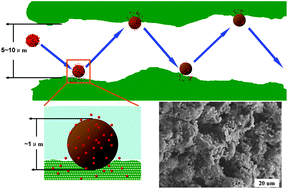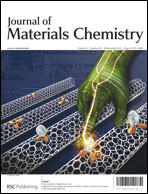Novel selective adsorbent derived from hierarchical rockery-like MCM-41 monolith†
Abstract
The design and preparation of a new “self-protected” mesoporous adsorbent is reported for the first time, in order to selectively adsorb tobacco specific nitrosamine (TSNA) carcinogens in environmental tobacco smoke (ETS). Hierarchical rockery-like MCM-41 monoliths with the tunable hollow structure and macropores are synthesized under special conditions by controlling the formation and connection of primary particles: through self-assembly and flow induced orientation, the initial formed prism-like primary particles are compelled to form circular disc- or ellipse-like secondary structures, and these domains connect together to form flats that are linked by small flats to yield units on millimeter scale, finally these units are randomly crooked to generate monoliths at centimeter level. These monolithic materials have similar textural properties, surface state and the same primary particles as common MCM-41, but they exhibit unique selectivity in the capture of TSNA in cigarette smoke. They also avoid unnecessary trapping of accompanying particles, which is realized for the first time because of the morphology-induced new function, opening a new way to create superior selectivity in complicated adsorption processes, where the target is adhered on the particles in a gas stream.


 Please wait while we load your content...
Please wait while we load your content...